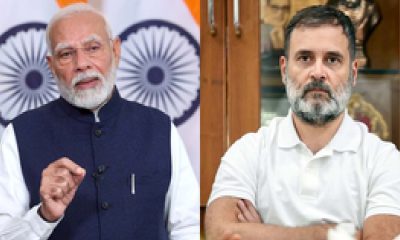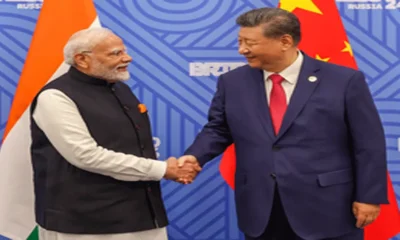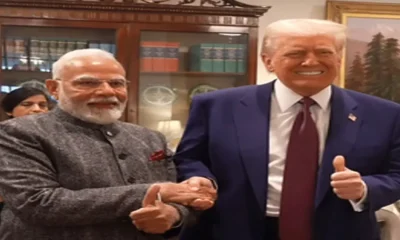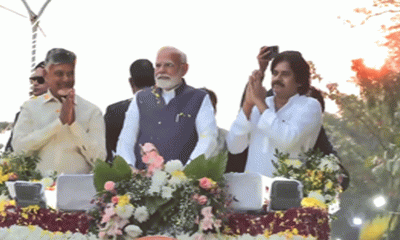Politics
Resilient infrastructure can prevent disasters for this, many future generations: PM Modi

Stating the need to keep people at the heart of any infrastructure growth story and providing them with high quality, dependable, and sustainable services in an equitable manner, Prime Minister Narendra Modi on Wednesday asserted that resilient infrastructure can prevent disasters not only for this generation but for many future generations.
“Infrastructure is not just about creating capital assets and generating long-term return on investment. It is not about the numbers. It is not about the money. It is about people. It is about providing them high quality, dependable, and sustainable services in an equitable manner. People must be at the heart of any infrastructure growth story. And, that is exactly what we in India are doing,” he said in his pre-recorded address at the inaugural session of the International Conference on Disaster Resilient Infrastructure.
The conference is being held jointly with the Coalition for Disaster Resilient Infrastructure (CDRI) in partnership with the United States Agency for International Development (USAID).
Launched by PM Modi at the Climate Action Summit in New York in 2019, CDRI is a multi-stakeholder global partnership of national governments, UN agencies and programmes, multilateral development banks, the private sector, academic and knowledge institutions.
Giving examples of when a bridge is washed away in floods, when a power line is broken by cyclonic winds, when a communication tower is damaged by forest fires, Modi said: “It disrupts the lives and livelihoods of thousands of people directly. The consequences of such infrastructure damage can last for years, and affect millions of people. So, the challenge before us is quite clear. With modern technology and knowledge at our disposal, can we create resilient infrastructure that is built to last? Recognition of this challenge underpins the creation of the CDRI.”
The Prime Minister also gave examples of success stories resulting from CDRI’s work.
Strengthening the resilience of power systems has already benefited communities in coastal India, by reducing the duration of power disruption during cyclones, he said.
“As this work progresses to the next phase, it can be scaled-up to benefit over 130 million people who are exposed to tropical cyclones every year. CDRI’s work on Resilient Airports is studying 150 airports around the world. It has the potential to contribute to the resilience of global connectivity,” he added.
About a ‘Resilient Infrastructure Transition’, which is the primary focus of the conference being held in Delhi, Modi asserted: “Resilient infrastructure can also be the centerpiece of our wider adaptation efforts. If we make infrastructure resilient, we prevent disasters not only for ourselves but for many future generations.”
The inaugural session of the ICDRI 2022 witnessed the heads of government from CDRI member countries share their perspectives on the opportunities and challenges to build climate and disaster resilience in transitioning infrastructure systems.
Australian Prime Minister Scott Morrison, Japanese Prime Minister Kishida Fumio and Madagascar President Andry Rajoelina also spoke on the occasion through video addresses.
Maharashtra
After Babri, it’s Kashi Mathura’s turn. Baba Bageshwar Dham’s provocation in Mumbai.
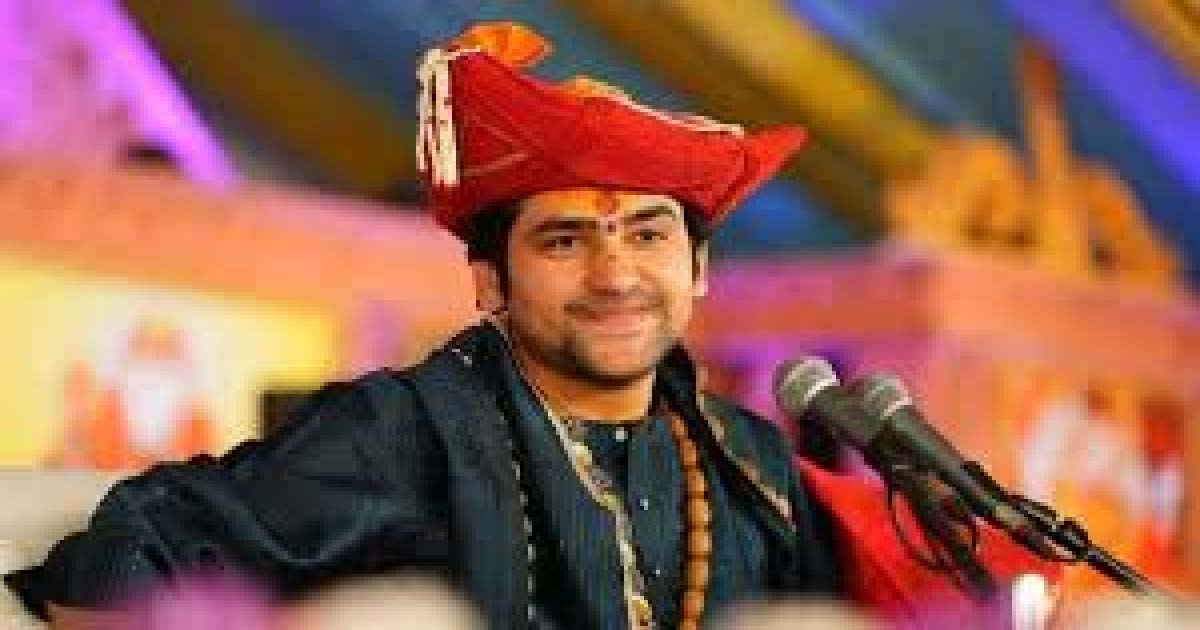
Mumbai: After the Babri Masjid, now it is Kashi Mathura’s turn, the slogan and provocation has been given by Dhirendra Shastri Bageshwar Dham Baba here in Mumbai. While answering the question of journalists in Andheri, Bageshwar Dham said that the temple is ours and we cannot give it up. When Baba was asked that the dispute had ended after the Babri Masjid, then why is the process of finding temples in mosques going on, to which he said that there are temples in many places and the dispute here is old. On Hindu Rashtra, Bageshwar Dham made it clear that there is also room for Muslims in Hindu Rashtra, his aim is to strengthen Sanatan, while a pilgrimage for Hindu Rashtra will start in Maharashtra to promote Hindutva. He said that it is wrong to declare India a secular country because India has never been secular. He said that there is a need for brotherhood and unity in this country and for that he goes on pilgrimage. Baba, while spewing venom, said that if efforts are not made for Hindu Rashtra and Hindus are not united, then the time is not far when the invasion of India will take place. He said that highly educated doctors in the country are becoming terrorists. If there is a Hindu Rashtra, then a Muslim youth will become Abdul Kalam. Will the mayor of Mumbai be a Muslim or a Hindu? On this, Bageshwar Dham said that he is away from politics, so a candidate should be selected who is useful for the people.
Maharashtra
AAP debut in BMC,will contest all 227 seats on it’s own, rules out allianceannounces
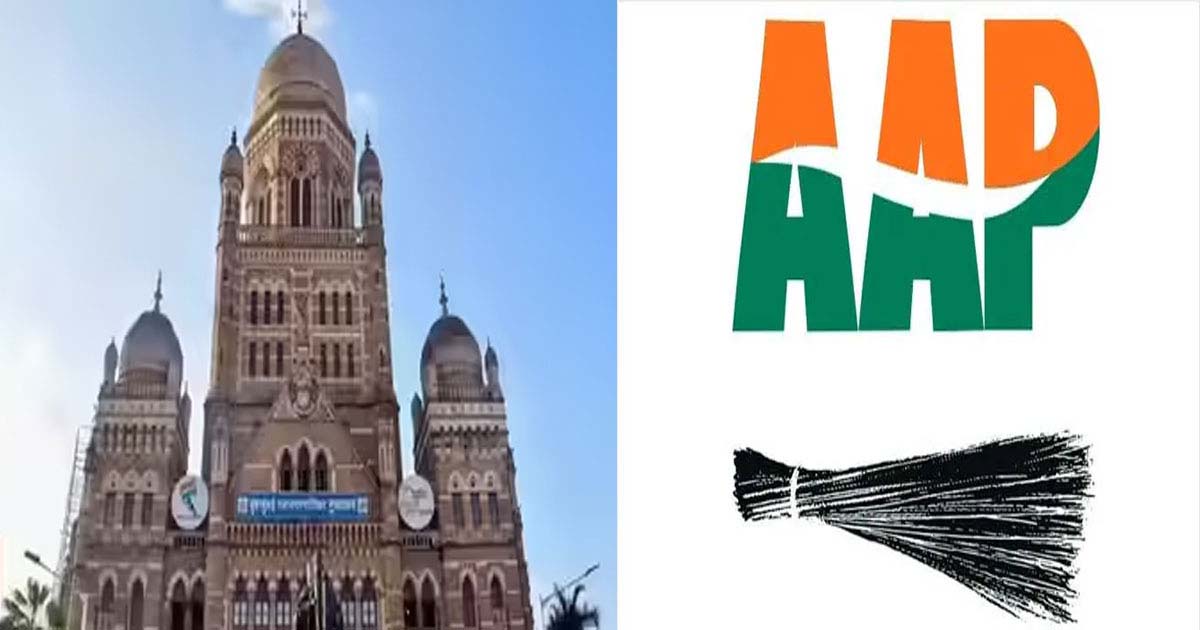
Mumbai: (Press release)The Aam Aadmi Party today announced its decision to contest the upcoming BMC General Elections 2026, on its own strength. The youngest national party, ruled out any possibility of an alliance and stated that they will field AAP candidates on all 227 wards.
“Despite being India’s ‘Urbs Prima’, Mumbai is in a mess. BMC has a whopping Rs. 74,447 Crore annual budget- the largest in Asia. Mumbaikars pay the highest taxes in the country and yet get shoddy public services.
The BMC is a cesspool of corruption and monumental ineptitude. BMC schools are shutting down and education quality remains poor, primary health care centres are non-existent, hospitals are overburdened and BEST is being systematically killed and it’s bus fleet has been starkly declining.Some of the world’s most expensive real estate is surrounded by squalor.
Garbage disposal is poor and filth is lying all around and our ecology has degraded with tree cover rapidly depleting. Pollution is at an all time high, Our AQI levels are as high as Delhi, despite us being on the coast and we are the only city in the world which releases untreated sewage in the open sea.
In the name of Dharavi Redevelopment, we are witnessing the biggest land grab in the history of independent India. For the last 4 years, the BMC has been without public representation and our once 90,000 Crore Fixed Deposits, have fallen sharply and reached its nadir.
All of this is nothing but ‘avoidable suffering’ inflicted on Mumbaikars, by a lumpen political class. Every political party has looted Mumbai, prioritising their selfish interests over public good. “, said Preeti Sharma Menon, Mumbai President, Aam Aadmi Party.
“The AAP is not just the alternative but the solution. Few good people in the BMC, is what Mumbai desperately needs. We know how to fix governance, under Arvind Kejriwal and Bhagwant Mann’s leadership, we have done so in Delhi and Punjab, provided world class education, healthcare, water and electricity, without corruption and without debt.
We need the broom, to sweep the corrupt and inept away. With just 7 corporators, AAP will have a house leader and representation on all statutory committees (Standing, Improvement, Health, Education and BEST). When we last contested in 2014 Lok Sabha polls, we got 5.16% of the vote share and over 2,73,000 votes. We will better this feat this time round and are getting tremendous support on the ground.
Mumbai needs AAP. We are India’s youngest National party and will contest on all of Mumbai’s 227 seats on our own strength.”, said Sanjay Singh, MP, Aam Aadmi Party.
Crime
Three Noida schools receive hoax bomb threat emails; UP Police launch probe

Noida, Dec 19: Panic gripped Noida in Uttar Pradesh’s Gautam Buddha Nagar district, as several prominent educational institutions received threatening emails warning of bomb blasts in their premises.
The e-mail bomb threat, received by the Step by Step School in Sector-126, triggered an alarm in the school administration, leading to the evacuation of children and teachers, followed by heightened security checks.
The police teams rushed to the campus after they were informed about a bomb threat by the school administration. Police reached the spot, cordoned off the school premises and carried out a thorough search operation; however, nothing suspicious was found. Bomb disposal squad and dog squad were brought in to scan the classrooms, corridors, basement, playgrounds and other sensitive areas.
As no mysterious objects or explosive materials were recovered during the search, the police eventually declared it to be a hoax call.
The latest episode of bomb threats in Noida and other NCR schools marks a continuation of the disturbing trend of hoax threats, seen in the past few months, targeting educational institutions – primarily schools.
Apart from the Step by Step School, the two other schools that are reported to have received hoax threat calls include Amity School and Shiv Nadar School. The simultaneous threats via email to the city’s three prestigious schools created an atmosphere of fear and trepidation among the administration as well as parents.
Meanwhile, the police have launched a detailed probe into the incident, activating its cyber cell to identify the source and sender of the hoax email. An investigation is underway to locate the IP address from which the threatening email was sent, and also to determine whether it was an act of mischief or an organised conspiracy.
The Noida Police have also appealed to the school authorities and the public at large, not to take any suspicious information lightly, but also not to pay attention to rumours and hearsay. Parents as well as the general public have been urged to immediately report any visible threat or suspicious activity to the police.
-

 Crime3 years ago
Crime3 years agoClass 10 student jumps to death in Jaipur
-

 Maharashtra1 year ago
Maharashtra1 year agoMumbai Local Train Update: Central Railway’s New Timetable Comes Into Effect; Check Full List Of Revised Timings & Stations
-

 Maharashtra1 year ago
Maharashtra1 year agoMumbai To Go Toll-Free Tonight! Maharashtra Govt Announces Complete Toll Waiver For Light Motor Vehicles At All 5 Entry Points Of City
-

 Maharashtra1 year ago
Maharashtra1 year agoFalse photo of Imtiaz Jaleel’s rally, exposing the fooling conspiracy
-

 National News1 year ago
National News1 year agoMinistry of Railways rolls out Special Drive 4.0 with focus on digitisation, cleanliness, inclusiveness and grievance redressal
-

 Maharashtra1 year ago
Maharashtra1 year agoMaharashtra Elections 2024: Mumbai Metro & BEST Services Extended Till Midnight On Voting Day
-

 National News1 year ago
National News1 year agoJ&K: 4 Jawans Killed, 28 Injured After Bus Carrying BSF Personnel For Poll Duty Falls Into Gorge In Budgam; Terrifying Visuals Surface
-

 Crime1 year ago
Crime1 year agoBaba Siddique Murder: Mumbai Police Unable To Get Lawrence Bishnoi Custody Due To Home Ministry Order, Says Report





